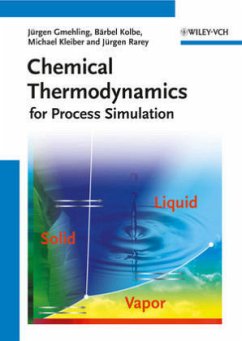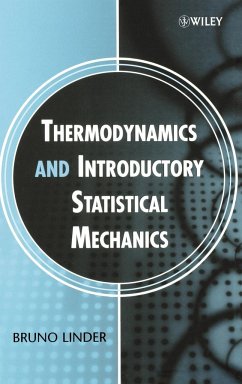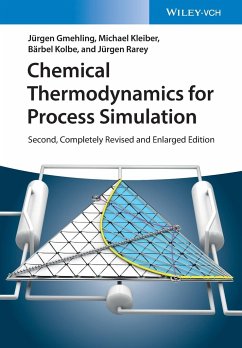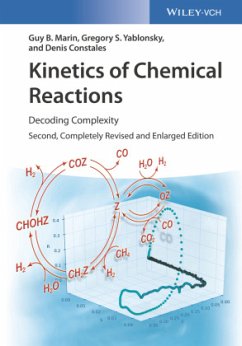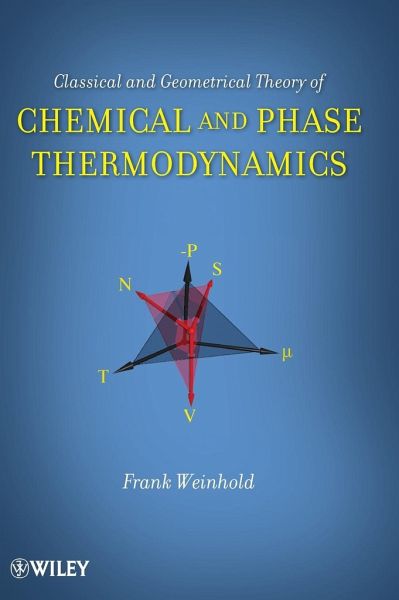
Classical and Geometrical Theory of Chemical and Phase Thermodynamics

PAYBACK Punkte
87 °P sammeln!
Simplified, innovative alternative to standard calculus-based thermodynamicsThis textbook proves how equilibrium thermodynamics, a traditionally difficult subject, can be accurately expressed using basic high school geometry concepts. Specifically, the text deals with classical equilibrium thermodynamics and its modern reformulation in metric geometric terms. The author emphasizes applications to chemical and phase equilibria in complex chemical systems, statistical mechanical origins, and extensions to near-equilibrium transport properties.The text is divided into three parts:Part One: Induct...
Simplified, innovative alternative to standard calculus-based thermodynamics
This textbook proves how equilibrium thermodynamics, a traditionally difficult subject, can be accurately expressed using basic high school geometry concepts. Specifically, the text deals with classical equilibrium thermodynamics and its modern reformulation in metric geometric terms. The author emphasizes applications to chemical and phase equilibria in complex chemical systems, statistical mechanical origins, and extensions to near-equilibrium transport properties.
The text is divided into three parts:
Part One: Inductive Foundations of Classical Thermodynamics
Part Two: Gibbsian Thermodynamics of Chemical and Phase Equilibria
Part Three: Metric Geometry of Equilibrium Thermodynamics
In addition to a rigorous introduction to the principles of chemical and phase thermodynamics, this text takes a novel, innovative approach, reformulating and extending these principles in the framework of Euclidean and Riemannian geometry. The resulting "thermodynamic geometry" provides a powerful alternative to the traditional calculus-based formulation of equilibrium thermodynamics. Students will find that this approach simplifies many mathematical derivations and clarifies thermodynamic logic. Moreover, this approach suggests novel extensions to equilibrium and nonequilibrium systems of arbitrary chemical and phase complexity.
This text also provides a general introduction to vector- and matrix-algebraic methods that are highly effective for thermodynamics as well as applications in quantum mechanics and other advanced topics in physical chemistry.
With its unique simplified approach to thermodynamics coupled with its discussions of the historical and conceptual development of the field, this text is ideal for both undergraduate and graduate students in physical chemistry, chemical engineering, thermal physics, and materials sciences.
This textbook proves how equilibrium thermodynamics, a traditionally difficult subject, can be accurately expressed using basic high school geometry concepts. Specifically, the text deals with classical equilibrium thermodynamics and its modern reformulation in metric geometric terms. The author emphasizes applications to chemical and phase equilibria in complex chemical systems, statistical mechanical origins, and extensions to near-equilibrium transport properties.
The text is divided into three parts:
Part One: Inductive Foundations of Classical Thermodynamics
Part Two: Gibbsian Thermodynamics of Chemical and Phase Equilibria
Part Three: Metric Geometry of Equilibrium Thermodynamics
In addition to a rigorous introduction to the principles of chemical and phase thermodynamics, this text takes a novel, innovative approach, reformulating and extending these principles in the framework of Euclidean and Riemannian geometry. The resulting "thermodynamic geometry" provides a powerful alternative to the traditional calculus-based formulation of equilibrium thermodynamics. Students will find that this approach simplifies many mathematical derivations and clarifies thermodynamic logic. Moreover, this approach suggests novel extensions to equilibrium and nonequilibrium systems of arbitrary chemical and phase complexity.
This text also provides a general introduction to vector- and matrix-algebraic methods that are highly effective for thermodynamics as well as applications in quantum mechanics and other advanced topics in physical chemistry.
With its unique simplified approach to thermodynamics coupled with its discussions of the historical and conceptual development of the field, this text is ideal for both undergraduate and graduate students in physical chemistry, chemical engineering, thermal physics, and materials sciences.




